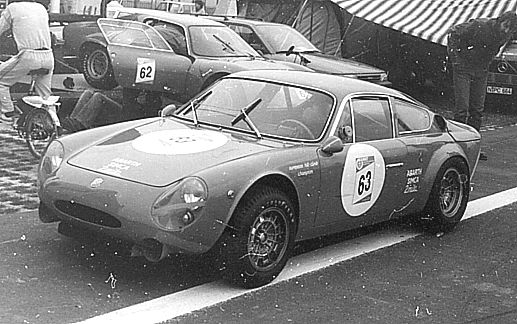Few collaborations in automotive history have produced machines as captivating as the Abarth Simca 2000 GT Corsa. This racing thoroughbred emerged from an unlikely partnership between Italian performance wizards and French manufacturing prowess, creating a vehicle that dominated European circuits in the mid-1960s.
The story begins in 1963, when Carlo Abarth unveiled his latest creation at the Geneva Motor Show. This wasn’t just another sports car — it represented a perfect fusion of Italian racing DNA and French industrial might, all wrapped in a sleek fastback body that turned heads and sliced through air with remarkable efficiency.
The Birth of a Racing Legend
The 2000 GT Corsa marked a defining moment in European motorsport history. Abarth’s engineering team pushed boundaries with every aspect of the design, creating a purpose-built racing machine that could dominate both circuit racing and rallying events.
The development process sparked numerous innovations, particularly in engine design and aerodynamics. Engineers spent countless hours in wind tunnels perfecting the car’s distinctive profile, resulting in groundbreaking improvements to high-speed stability.
“Working on the 2000 GT Corsa was like being part of a revolution. We weren’t just building another race car — we were rewriting the rules of what was possible,” — Marco Romano, former Abarth engineer.
The limited production run only added to the car’s mystique. Each vehicle received meticulous attention to detail, with the rare “long nose” variant representing the ultimate evolution of the design. Only ten examples of this configuration ever left the factory, making them among the most sought-after variants in existence.
Engineering Excellence
At the heart of this Franco-Italian masterpiece beats a remarkably sophisticated power plant. The 1946cc inline-four engine might seem modest by today’s standards, but its output was nothing short of extraordinary for the era.
Fact!
The racing-spec engine produced 177 horsepower from just under two liters of displacement — a remarkable achievement for 1960s technology, especially considering it was achieved without forced induction.
The racing version featured several groundbreaking innovations:
- dry sump lubrication for improved oil control during high-g cornering;
- twin Weber 45mm carburetors for precise fuel delivery;
- dual-ignition system for optimal combustion efficiency;
- aluminum cylinder head for better thermal management.
“The engine was decades ahead of its time. Its combination of power, reliability, and throttle response set new standards for racing engines,” — James Harrison, Classic Racing Historian.
Consider this: the car produced almost 200 Nm of torque, delivered through a robust four-speed gearbox to the rear wheels. The chassis design matched this potent drivetrain perfectly.
Racing Heritage and Performance
Racing success came swiftly for the 2000 GT Corsa. Its combination of light weight, powerful engine, and exceptional handling made it a formidable competitor on both circuit and rally stages.
Historical Reference!
During the 1964 racing season, the 2000 GT Corsa secured victories in 12 major European racing events, including a memorable class win at the Targa Florio.
The car’s most distinctive feature — the 1965 “duck-tail” rear end — wasn’t just for looks. This aerodynamic enhancement provided crucial high-speed stability, particularly important given the car’s rear-engine configuration.
Track performance benefited from several key features:
- balanced weight distribution for neutral handling characteristics;
- sophisticated suspension geometry that minimized body roll;
- aerodynamic stability at high speeds;
- excellent brake cooling for sustained racing performance.
A Legacy in Motion
The blend of Italian passion and French precision that created the 2000 GT Corsa left an indelible mark on automotive history. Today, surviving examples command extraordinary respect among collectors and historians alike.
Important!
The 'long nose' variants, with just ten units produced, rank among the most valuable Abarth vehicles ever made, with recent auction prices exceeding €1 million.
The car’s influence extends beyond its racing achievements. Its development process established new standards for international automotive collaboration, proving that great things happen when different automotive cultures combine their strengths.
| Pros | Cons |
|---|---|
| Revolutionary engine design with excellent power output | Limited production numbers make parts extremely rare |
| Exceptional handling characteristics for its era | High maintenance costs due to specialized components |
| Impressive racing pedigree with numerous victories | Complex engine design requires expert knowledge |
| Strong collector value with consistent appreciation | Limited practicality for regular road use |
| Historical significance in automotive development | Restoration challenges due to unique specifications |
| Innovative aerodynamic solutions | High acquisition costs for well-preserved examples |
| Remarkable power-to-weight ratio | Sensitive to driving conditions due to racing setup |
The Abarth Simca 2000 GT Corsa represents more than just a successful racing car — it embodies the golden age of European motorsport collaboration. Its combination of performance, rarity, and historical significance ensures its place among the most desirable classic racing cars ever produced.

